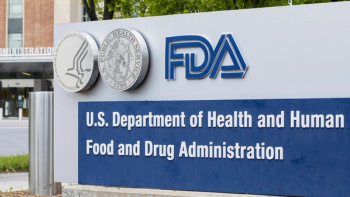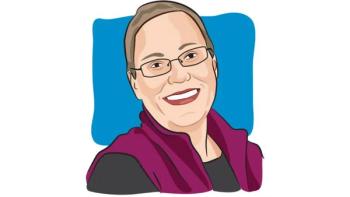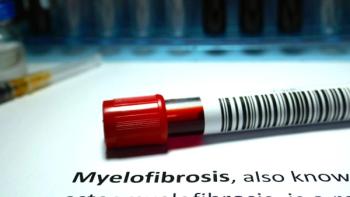
How a Hike on Mount Everest to Raise Awareness, Funds for Blood Cancer Forever Changed the Lives of the Participants

In 2018, 18 trekkers completed an awe-inspiring hike of the Himalayan highlands to the doorstep of the world’s tallest mountain, Mount Everest, to raise awareness and funding for multiple myeloma, a type of blood cancer. Three of the climbers discuss a bond that hasn’t broken.
As the helicopter took off in the distance, 18 individuals watched and readied themselves to embark on a trek that would eventually take them to an altitude of 18,519 feet above sea level.
Four years after that daunting trek, three of the 18 hikers reminisce about their journey to the doorstep of the world’s tallest mountain, Mount Everest. The friendship the trio has since built started outside a coffee stand after being dropped off by the helicopter, according to Dr. Saad Z. Usmani, a hematologic oncologist and chief of Myeloma Service at Memorial Sloan Kettering Cancer Center in New York City.
In 2018, Stan Wagner, who was diagnosed with multiple myeloma in 2013 and resides in Brooklyn, New York; Dr. Ben Marcus, who received a diagnosis of multiple myeloma in 2016 and is the director of facial plastic surgery at University of Wisconsin in Madison; and Usmani joined 15 other individuals on a hike that would forever alter their perspectives on life. During a recent CURE® Educated Patient® Summit on multiple myeloma, the three discussed how participating in Moving Mountains for Multiple Myeloma®, a joint initiative between the Multiple Myeloma Research Foundation and CURE Media Groupwith the mission of raising funds and awareness for multiple myeloma research, has helped them find a purpose.
Usmani: Those friendships from the trip changed my perspective on life. For the both of you, what can you say about the relationships that came from that trip?
Wagner: It was kind of instantaneous. With the Kilimanjaro trek, we met the first time for our practice hikes and bonded immediately. And it was just like a big family. The same thing with the Everest trek.
Of the four years preparing, I spent almost two of those training. I looked at some of the other guys on the hike on the first track: They were going to a gym. They’re doing this, and I just thought not me. So I had a plan: three days at the gym at lunch and long walks on the weekend, including hikes in upstate New York. And it got me through. But the family thing was the key.
Marcus: One of the things that was so great about the trip is you got to see a whole bunch of people who were in the same spot as you, kind of with the same attitude. Anyone who decided to go climb Mount Kilimanjaro or Mount Everest probably has some zest for trying to live. But those people and the medical staff that were on that, and the people that work in advocacy, they get it. They know what it feels like to constantly have that little myeloma creature peeking over your shoulder. Just a couple days ago, one of the people from our trip texted me about something with their medical condition, and we get each other in a way that’s very hard to understand unless you’ve lived through that. I’m really grateful for those long-term friendships. I mean, it’s four years ago, and we still all reach out every so often and stay in touch because that particular level of understanding and connection is hard to come by.
Wagner: Having a doctor like Saad on the team is also a big plus. If I have a go-to question right away and I can’t find my doctor, which is the case more than I’d like, he’s just there for me, which I really appreciate.
Marcus: Yeah, we also asked him about 1,000 questions. I got a lot of free medical advice.
Usmani: In return, you changed my perspective on life. How precious life is and how important it is to have these relationships, to take on these challenges in life and do it for a cause. That’s the gift that you gave me. That trip also made me realize that I need to pay attention to my health. And it really changed my own perspective on getting on board with other endurance events and continuing to raise funds for the cause.
Usmani: What are your biggest takeaways from this whole experience so far?
Wagner: How much money we’ve raised. Why we’ve done it. I mean, that’s the biggest takeaway. Climbing mountains is one thing, but doing it for a real good cause and being somewhat successful, that, to me, is the biggest takeaway.
Marcus: For me, the biggest takeaway is that the world’s a huge place, and it’s really nice to feel small sometimes. I’ll never forget being in Nepal. When you’re a patient, sometimes you tend to get in your own head a little bit. When you’re sitting there and you’re looking at these beautiful vistas, it just changes the world, right? Whether you’re worried about your job, or you’re worried about your family or you’re worried about your health, when you’re out there and you see how amazingly large this world is, it changes your perspective. And so I think that it’s never bad for a change of perspective, but it’s vitally important for patients with cancer to snap them out of sometimes this negativity and focus on all the beauty and wonder that’s in the world.
This transcript has been edited for clarity and conciseness.
For more news on cancer updates, research and education, don’t forget to





